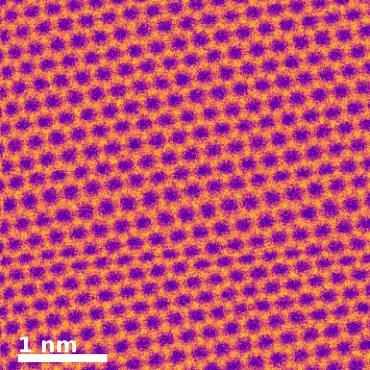Moiré – the word might seem intimidating, however once you know what you are looking for you will spot moiré patterns everywhere.
Maybe you have noticed that how, if you have two kitchen strainers and you put them on top of each other you get very pretty effects, or how, if you have an office chair a with fine mesh back you see darker and lighter wave like features?post
Those are moiré patterns!
So, everything you need are two or more gratings or other periodic structures that are very similar, yet not exactly the same – they need to either be shifted a bit with respect to one another or differing in size slightly or be twisted with respect to each other a bit.
We mostly research 2D materials, so materials that are so thin, they often consist of only one single layer of atoms that are arranged in a certain lattice. For example graphene, a single layer of graphite (the stuff that is in your pencil), looks like a honeycomb:

In our electron microscope we can look at this material and even see the single atoms:

Now, what happens if we stack two of those honeycomb layers?
This can be seen very well with our Moiré Wheel of Fortune: Here you see two graphene lattices overlain and you can turn the upper one to any angle and see how the moiré pattern changes:
Even though this is already pretty cool, it is nothing compared to the real thing. Because also these structures we can look at with our microscope:

Besides looking pretty, these graphene stacks also have interesting electronic and mechanical properties that can be studied.